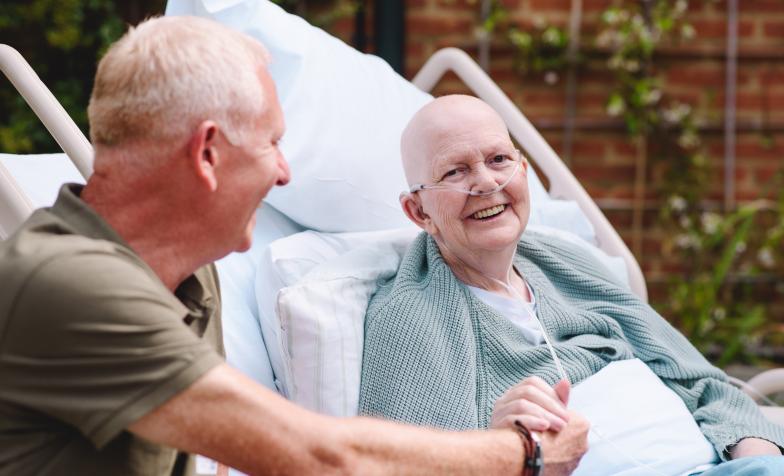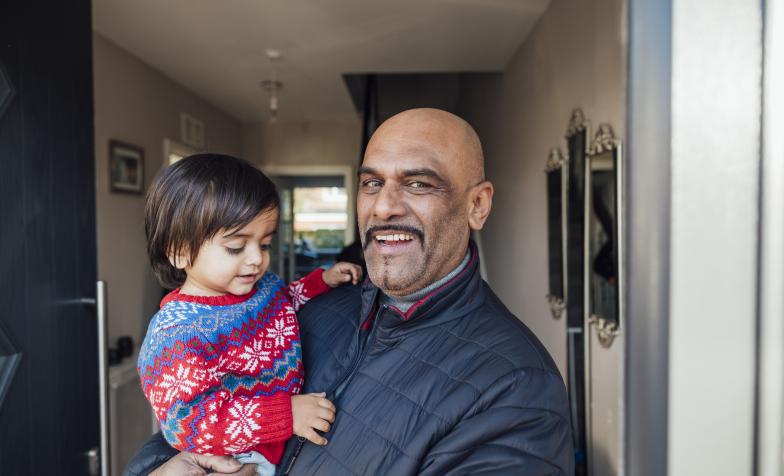

The making of the Birdsong project
The love and support Welsh children’s hospice Ty Hafan gives its families doesn’t stop when their child dies. The charity, based in Sully, in the Vale of Glamorgan, offers different kinds of support for bereaved families, who continue to be welcomed at all Ty Hafan family events.
A different way to say their children will always be part of their lives.
Tracy, Ty Hafan hospice
Within the grounds of the hospice there’s a Memorial Garden, home to a project called "These Names Will Be Forever In Our Skies", also referred to as Birdsong.
Borne out of a conversation between Sound Artist Justin Wiggan and Ty Hafan’s Head of Community Services and Partnerships Tracy Jones, it aims to remember the lives of the Ty Hafan children who have died through the medium of birdsong.
A new way to remember
Each child’s name has been translated using Morse code into the song of the bird which sings the loudest in the month the child passed, and is followed by a silence of one second for each year of the child’s life. With all the names put together, the piece currently runs at over three and a half hours and will continue to grow as future names are added.
The hope is that, as the piece plays in the memorial garden, the local birds will start to mimic the names and sing them to other birds, so that the names pass from bird to bird throughout the skies.
Tracy explains that the Memorial Garden used to have a service where families came to listen to their child’s name be read out, but she realised there could be a better way of doing this. "I could see the families weren’t really listening to the service at all. They liked being in a communal space, and they were waiting to hear their child's name.
"I know a lot of the families, and it almost felt like a Mexican wave as I caught people's eyes, because you could just see the release of breath as they heard their child's name.
"That really resonated with me. As we were approaching our 20th year, we realised we’d have to think of a different way of doing this, because we couldn’t keep adding 30 or 40 names to the garden every year."
Translating memories into birdsong
In 2018 the garden was being redesigned, and Tracy wanted a space that emulated a summer house so that families could sit and reflect under shelter, with a view of the sea.
"At the time I was doing another project with the sound artist Justin, so I said "Wouldn't it be awesome if we had some sort of sound system where we could whisper the children's names in the wind? My vision was that we’d be sitting by the sea, and the wind would be playing through the trees, these names would be whispered and then just play on a perpetual loop."
Justin loved the idea and a week later came back with the suggestion of translating the children's names into birdsong. "I have to say it was a bit of a Marmite project," Tracey says, "some people really got it and others thought it was just weird, but I loved it right from the start."
The two worked together on the project, with Justin in charge of identifying which birds he would use and how to use them. The hospice sought permission from the families, and Justin then used Morse code to translate them, before attributing them to different birds depending on the month of the child's death.
One problem was that the gaps between sounds didn’t quite work, so Tracy came up with the idea that the gap between each child's third song should be the seconds that represented the years of their life.
"For a baby for instance, we have a fleeting gap, and for an 18-year-old there’s an 18 second gap. The gaps are absolute sucker punches when you listen and count the seconds. It's really powerful." she says.
Always together
The families have been very happy with the project since it launched, with many asking for an individual mp3 of their child’s birdsong, which the hospice can now provide. "Some of them have used them as ring tones," Tracy explains. "This is a way of being able to say that their children will always be part of their lives. It's a different way of remembering them."
"In the case of one particular family, after their little girl had died they'd been looking for something they could use to remember her by, but they didn't want a bench or a tree.
"I came to them with this project and asked them to be part of its inception, and they said it just answered everything for them because it was four dimensional. It spoke to them in a way that said their little girl was no longer contained, that she was a free spirit.
"One of the most powerful things they said to me was that when they heard her song in the piece they found it even more powerful because they realised she wasn't alone, she was with all these other children and they no longer had to think of her being somewhere on her own."
This year the hospice had to conduct its memorial service virtually, and they decided to livestream the event with the birdsong playing in the background. Tracy adds, "It's just proved to be a really good way to show families that we will continue to care for them."
About Hospice Care Week
Hospice Care Week is a chance to join with hospices nationwide to celebrate the hard work, achievements and commitment of our hospice sector. At Hospice UK, we believe that everyone, no matter who they are, where they are or why they are ill, should receive the best possible care at the end of their life.


